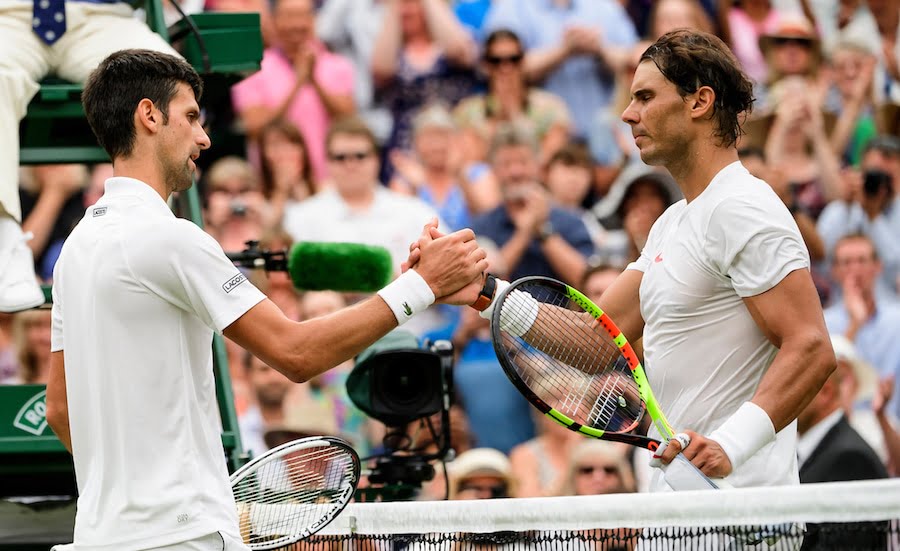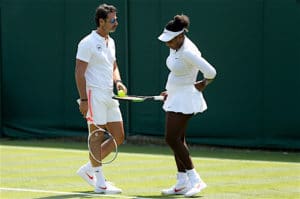
Patrick Mouratoglou exclusive column: “We should all be working together for the good of tennis”
Spectators at the US Open might also be scratching their heads in a few weeks time says Patrick Mouratoglou, the coach to Serena Williams and the man whose tennis academy in the South of France has helped developed the exciting young American star Cori Gauff
The Australian Open adopted first-to-10-points tie-breaks at 6-6 in deciding sets at the start of this year, while the French Open have kept their format of “advantage” final sets. By the time New York comes around – assuming the US Open does not in the meantime change its format of first-to-seven-points tie-breaks at 6-6 in deciding sets – all four Grand Slam tournaments will have used different systems to decide final sets.
I’m sure that some people within tennis find it hard to keep pace with these changes, so what must it be like for casual followers of the sport? Not only do the Grand Slams each use different scoring formats, but they also differ from the systems used week by week on the men’s and women’s tours. Moreover, this is only one of a number of aspects of the game which differ from one tournament to the next.
For example, on-court coaching is allowed every week of the year on the women’s tour and in the Davis Cup and Fed Cup the captains actually sit on the court and coach their players during matches. However, on-court coaching is not allowed on the men’s tour or at Grand Slam tournaments, except – at some Grand Slam events – in qualifying and junior matches. Meanwhile on-court shot clocks, which inform servers (as well as spectators and umpires) when their time between points is up, are used at some tournaments but not at others.
All these discrepancies happen, of course, because we effectively have seven different governing bodies in the sport: the Association of Tennis Professionals and Women’s Tennis Association, which run the men’s and women’s tours respectively, the International Tennis Federation, which runs the Davis Cup and Fed Cup and is responsible for the rules of tennis and the sport’s anti-doping programme, and the four Grand Slam tournaments, which can each make their own decisions.
The result is that the different organisations sometimes head off in different directions. This is not good for the sport as a whole. We should be trying to make it easier for spectators to understand tennis, especially if we want to bring new fans into the sport. Having different rules at different events is just not helping.
One way in which the situation could be improved would be if the Grand Slams made decisions collectively and applied the same rules to all four of their tournaments. Of course there will be times when one of them has a different view, but if the other three all agree then I think the fourth should go along with the decision of the majority.
These are the four biggest tennis events of the year by a long way, when exposure for the sport is at its highest. The Grand Slams have great power. I would like them to sit around the table and make decisions that would be for the good of tennis, rather than just for the good for their own tournament.
I will give you another example of one tournament going its own way. I’m told that there was a change to the roof protocol at Wimbledon this year. Matches played under the roofs on Centre Court or No 1 Court which have not finished by 11pm would resume without the roof the following day, provided the weather is good.
This goes against the practice used elsewhere in tennis, because it’s a basic principle that you should finish a match in the same conditions as you started it. We could presumably have a situation at Wimbledon where a match will start in the open, then go under the roof because of rain and, if it has not finished by the 11pm curfew, resume back in the open the following day.
Another good example of the need to work together is the ITF’s new World Tennis Tour for players competing below Challenger level, which was launched at the start of this year. The ITF has been unable to reach agreement with the ATP and the WTA about this and the result is a new circuit which has very serious financial implications for players.
There aren’t enough tournaments to enter and many of the players just can’t make a living from them. It was hard enough before, when we had Futures tournaments, but now it’s even worse.
Everyone can make a mistake and the ITF needs to recognise that and rethink the World Tennis Tour.
Nobody is suggesting that any of this is easy, but we need more give and take on all sides if our sport is to prosper in the future. We need to bring new fans into the sport and we need to appeal to a modern audience. We should be thinking collectively about what we should all do to make tennis more modern and more appealing to younger generations. Let’s not think only about today and only about ourselves. The time has come to take decisions for the good of our sport’s future. We should start by sitting together around a table, as a team, with a commitment to make the necessary changes.
 Patrick Mouratoglou is the coach of Serena Williams and founder and president of the Mouratoglou Tennis Academy in the south of France
Patrick Mouratoglou is the coach of Serena Williams and founder and president of the Mouratoglou Tennis Academy in the south of France
To follow the action at the French Open check out our guide to the tournament or keep visiting our news section for daily updates on all the action at the 2019 French Open. If you want to watch the French Open on TV then follow our advice here
Look ahead to the rest of 2019 with our guides to every tournament on the ATP Tour and the WTA Tour. If you can’t visit the tournaments you love then do the next best thing and read our guide on how to watch all the ATP Tour matches on television in 2019. To read more amazing articles like this you can explore Tennishead magazine here or you can subscribe for free to our email newsletter here


